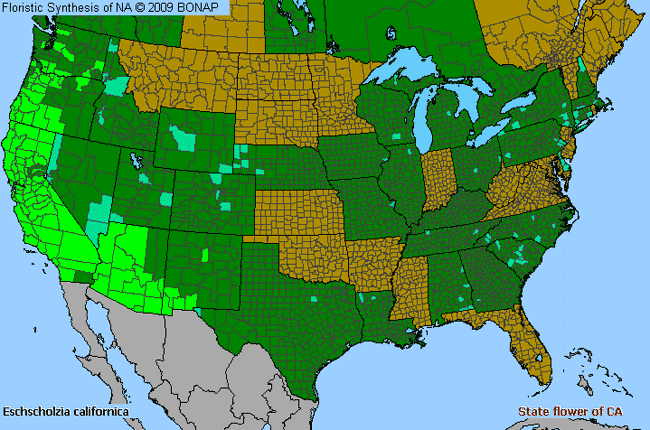California-Poppy (Eschscholzia californica)

California-Poppy Species Description

This species is native to North America north of Mexico.
Allergenicity: California-Poppy (Eschscholzia californica) is a mild allergen.
Pollination: Occurs in following seasons depending on latitude and elevation: all year long.
Angiosperm - Flowering Dicot: Plants in this group have two embryonic leaves (dicotyledons). Examples of dicotyledons are beans, buttercups, oaks, sunflowers, etc.
Forb: A broad-leaved herb other than a grass, especially one growing in a field, prairie, or meadow.
Weed: Any plant growing in cultivated ground to the injury of the crop or desired vegetation, or to the disfigurement of the place; an unsightly, useless, or injurious plant.
Annual: Plants in which the entire life cycle is completed within one growing season.
Perennial: Living for many years.
Herbaceous Stem: Not woody, lacking lignified tissues.
California-Poppy Species Usage

Pharmacological: Used in medicine or pharmacological research.
Honey/Bee Pollen: A plant used as a source of food for Honey Bees, and may be a flavor of honey such as clover or alfalfa.
Related Links

More California-Poppy (Eschscholzia californica) imagesby Jessie M. Harris from BONAP










